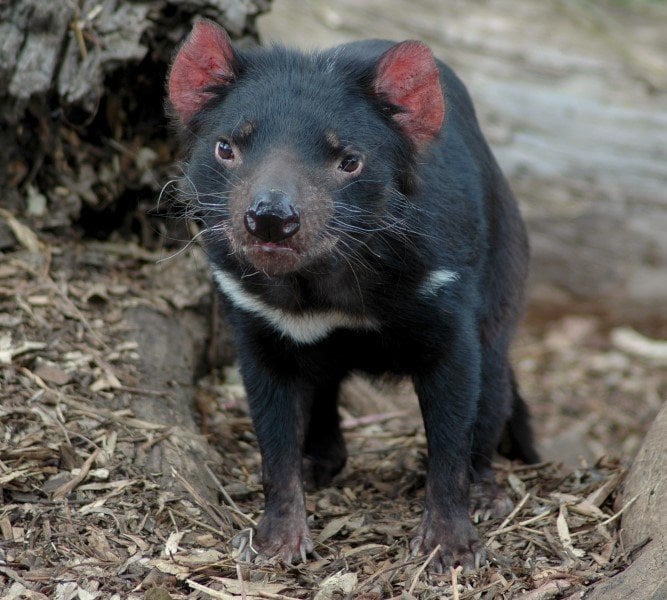Tasmanian devils found on mainland were probably stowaways, study finds

IN RECENT YEARS, a string of back-from-the-dead stories have emerged – such as the night parrot, sighted for the first time in 80 years back in 1990, and Gilbert’s potoroo, thought to be extinct for a century and rediscovered in 1994. Scientists are even planning to launch a search for the long-lost Tassie tiger on the basis of possible sightings in remote far north Queensland.
This led some to question whether Tasmanian devils – the largest living carnivorous marsupial – really have been extinct on mainland Australia for the last 3000 years, as evidence suggests. Adding to this prospect were three devil specimens collected in rural Victoria during the 20th century, two of which were found alive.

Back from the dead: Long thought to be extinct, there have been a string of recent sightings of the night parrot since the bird’s spectacular rediscovery in 2013. (Image: Bruce Greatwich)
Tasmanian devils alive on the mainland?
To address this, researchers Lauren White and Jeremy Austin at the University of Adelaide analysed the ancient DNA of these specimens, looking for a match with Tasmanian populations.
Unfortunately for believers, the results, published this week in Royal Society Open Science, show the devils originated in Tasmania.
“We identified seven single nucleotide polymorphisms (SNPs) in the mitochondrial genome that can distinguish between Tasmanian and ancient mainland populations,” explained Jeremy Austin, associate professor in evolutionary biology.
“The three Victorian devil specimens have the same seven SNPs diagnostic of modern Tasmanian devils, confirming that they were most likely transported from Tasmania and do not represent a remnant population of mainland devils.”
The researchers say these three devils probably came to Victoria as stowaways.
“At a guess I’d say they were kept as pets, or in private zoos, and escaped,” Jeremy said. “There are a few examples where devils escaped captivity on the mainland and were either never seen again, or were run over on the road nearby.”
Wild mainland devil populations
The possibility of mainland devil populations is potentially significant due to distancing from devil facial tumour disease (DFTD) – the contagious cancer that has ravaged devil populations in Tasmania.
“If a relict population of devils had survived on the mainland, then mainland devils might – and I stress might – have been resistant to DFTD, the disease that is killing devils in Tasmania,” Jeremy explained.
Wild mainland populations could also offer another potential benefit: Jeremy said devils represent “a native animal that might help control foxes, and possibly cats – two non-native predators that have almost single-handedly been responsible for the extinction or near extinction of many small mammals.”
Captive breeding programs are underway on the mainland, but Jeremy said rewilding these animals is still some way off.
“There are lots of good reasons to introduce devils to the mainland, but also some risks,” he said. “They might not survive, thus wasting precious healthy devils, or they may have unforeseen negative effects on other species – cane toads are a good example of just how wrong things can get.”
READ MORE:
- Tassie devils evolving rapidly to fight facial tumours
- Tassie devil vaccine may be on the horizon
- Breeding program ups the ante to save devils
- Tassie devils reared in captivity thrive in the wild




